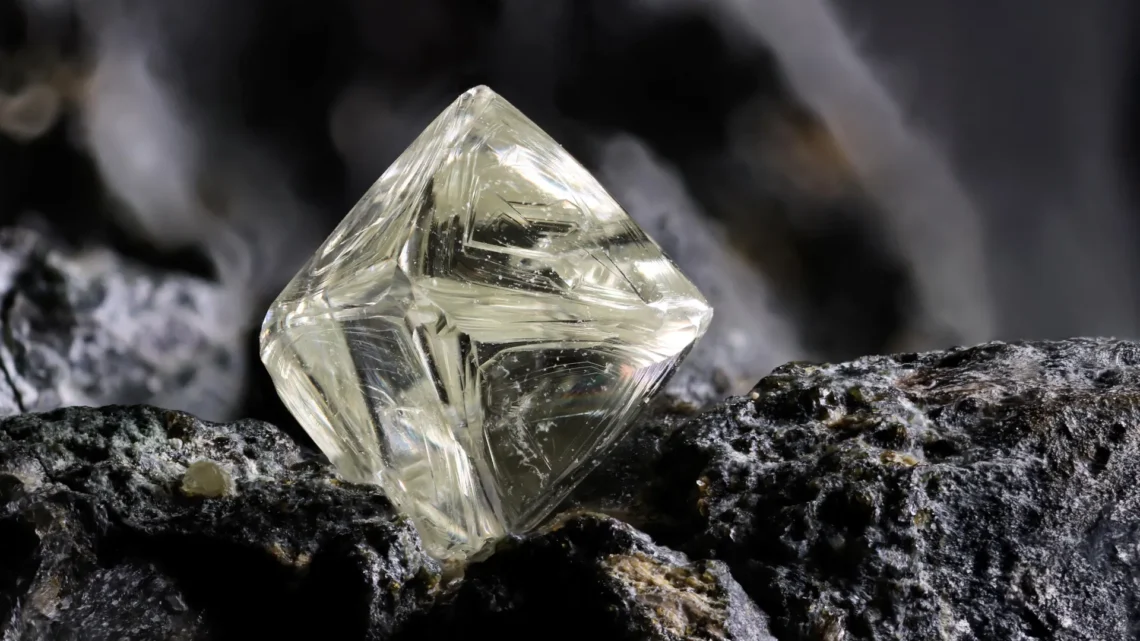If you’ve ever admired a diamond, it’s likely that it originated from a kimberlite. Surprisingly, over 70% of the world’s diamonds are extracted from these unique volcanic formations. Even after years of research, scientists are still piecing together the mystery of how kimberlites burst forth from the Earth’s mantle to the surface.
Kimberlites are carrot-shaped volcanic pipes that emerge from depths greater than 150 km in the Earth’s mantle. They intrigue geologists because they serve as glimpses into our planet’s deep interior. As magma ascends swiftly through the mantle and crust—sometimes reaching remarkable speeds of up to 80 miles per hour—it captures fragments of surrounding rocks, known as xenoliths and xenocrysts, during its journey.
“They’re incredibly fascinating yet still enigmatic,” says Ana Anzulović, a doctoral research fellow at the University of Oslo’s Centre for Planetary Habitability.
In a recent study published in the journal Geology, Anzulović and her team from the University of Oslo have made significant progress in unraveling this enigma. They created models to understand how volatile compounds like carbon dioxide and water impact the buoyancy of the proto-kimberlite melt in relation to its surrounding materials, providing the first quantifiable insights into what it takes for a kimberlite to erupt.
Diamonds reach the surface through kimberlites because their fast ascent prevents them from transforming back into more stable graphite under lower pressures and temperatures. However, the original melt composition of the kimberlite and the reasons behind its rapid ascent have remained elusive.
“They begin as something we can’t measure directly,” explains Anzulović. “While we have an idea, our knowledge mainly comes from the significantly altered rocks that we can study.”
To better understand the composition of these parental melts, the researchers concentrated on the Jericho kimberlite, which erupted in the Slave craton of northwest Canada. They employed chemical modeling to test various combinations of carbon dioxide and water.
“We aimed to create a chemical model of a kimberlite and then adjust the levels of CO2 and H2O,” says Anzulović. “Imagine sampling a kimberlite as it rises at different pressure and temperature levels.”
The team utilized molecular dynamics software to simulate atomic movements and observe how the atoms in a kimberlite melt behave under different conditions. Their calculations enabled them to determine the density of the melt at varying depths and whether it remained buoyant enough for an ascent.
The study’s key finding is that they identified the specific amount of CO2 needed for the Jericho kimberlite to successfully rise through the Slave craton. Their volatile-rich composition can transport up to 44% of mantle peridotite to the surface, which is impressive for such a low-viscosity melt.
Furthermore, the research illustrates that volatiles play essential roles. Water enhances the fluidity of the melt, while carbon dioxide helps stabilize it at high pressures. However, as the melt approaches the surface, carbon dioxide gas escapes, propelling the eruption. For the first time, the researchers confirmed that a minimum of 8.2% CO2 is necessary for the Jericho kimberlite to erupt; without it, diamonds would remain trapped in the mantle.
“I was pleasantly surprised that in such a small-scale system, we could see that without any carbon, the melt would be denser than the craton, meaning it wouldn’t erupt,” Anzulović notes. “It’s exciting that our modeling of kimberlite chemistry can inform such large-scale geological processes.”
Summary: Over 70% of the world’s diamonds originate from kimberlites, unique volcanic structures that erupt from deep within the Earth. Recent research by Ana Anzulović and her team has revealed the importance of carbon dioxide and water in determining the buoyancy of kimberlite melts, essential for their eruption. Their findings, particularly regarding the Jericho kimberlite, help clarify the conditions necessary for diamonds to reach the surface, shedding light on these fascinating geological structures.




